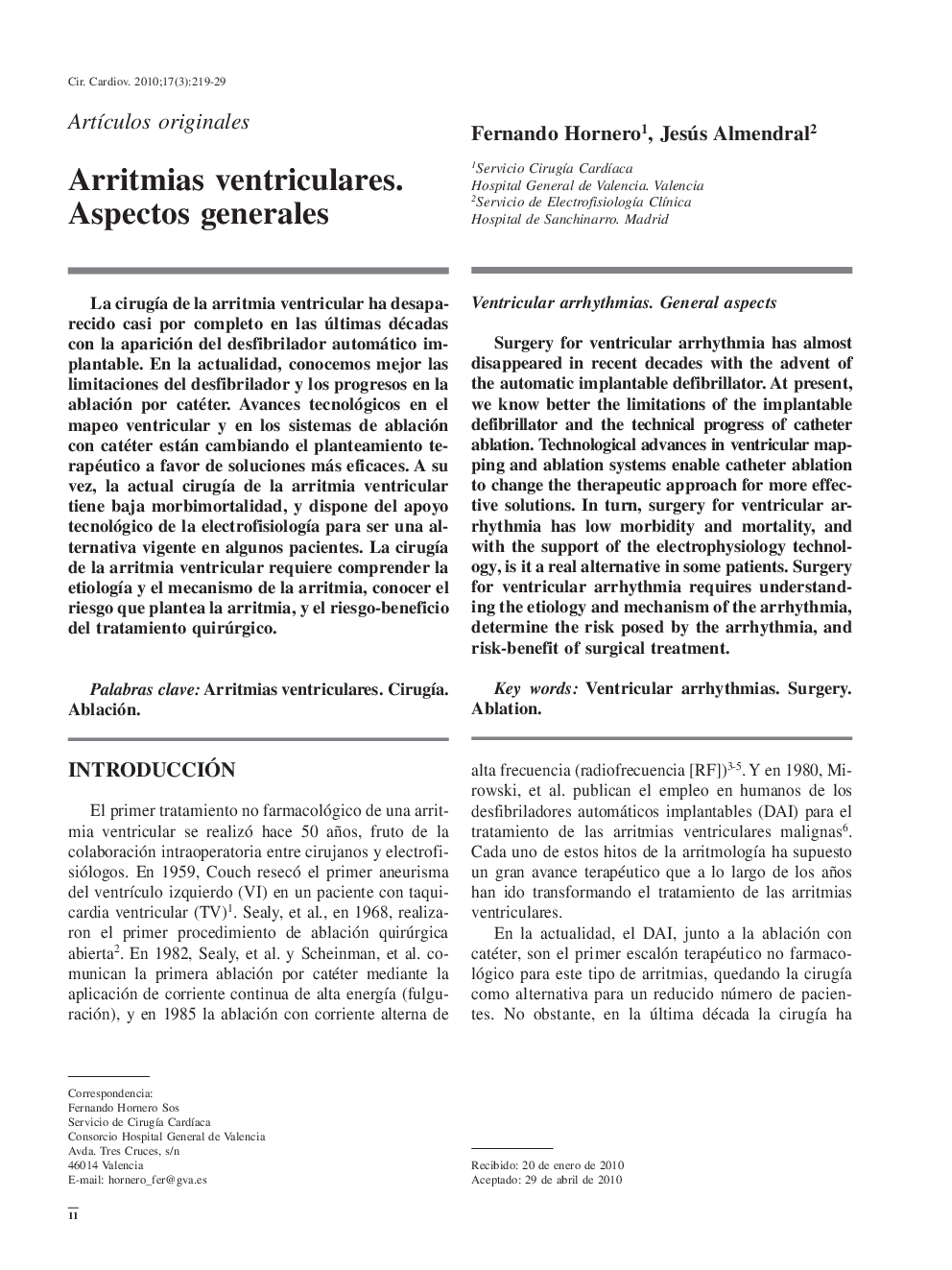| Article ID | Journal | Published Year | Pages | File Type |
|---|---|---|---|---|
| 2907885 | Cirugía Cardiovascular | 2010 | 11 Pages |
La cirugía de la arritmia ventricular ha desaparecido casi por completo en las últimas décadas con la aparición del desfibrilador automático implantable. En la actualidad, conocemos mejor las limitaciones del desfibrilador y los progresos en la ablación por catéter. Avances tecnológicos en el mapeo ventricular y en los sistemas de ablación con catéter están cambiando el planteamiento terapéutico a favor de soluciones más eficaces. A su vez, la actual cirugía de la arritmia ventricular tiene baja morbimortalidad, y dispone del apoyo tecnológico de la electrofisiología para ser una alternativa vigente en algunos pacientes. La cirugía de la arritmia ventricular requiere comprender la etiología y el mecanismo de la arritmia, conocer el riesgo que plantea la arritmia, y el riesgo-beneficio del tratamiento quirúrgico.
Surgery for ventricular arrhythmia has almost disappeared in recent decades with the advent of the automatic implantable defibrillator. At present, we know better the limitations of the implantable defibrillator and the technical progress of catheter ablation. Technological advances in ventricular mapping and ablation systems enable catheter ablation to change the therapeutic approach for more effective solutions. In turn, surgery for ventricular arrhythmia has low morbidity and mortality, and with the support of the electrophysiology technology, is it a real alternative in some patients. Surgery for ventricular arrhythmia requires understanding the etiology and mechanism of the arrhythmia, determine the risk posed by the arrhythmia, and risk-benefit of surgical treatment.
